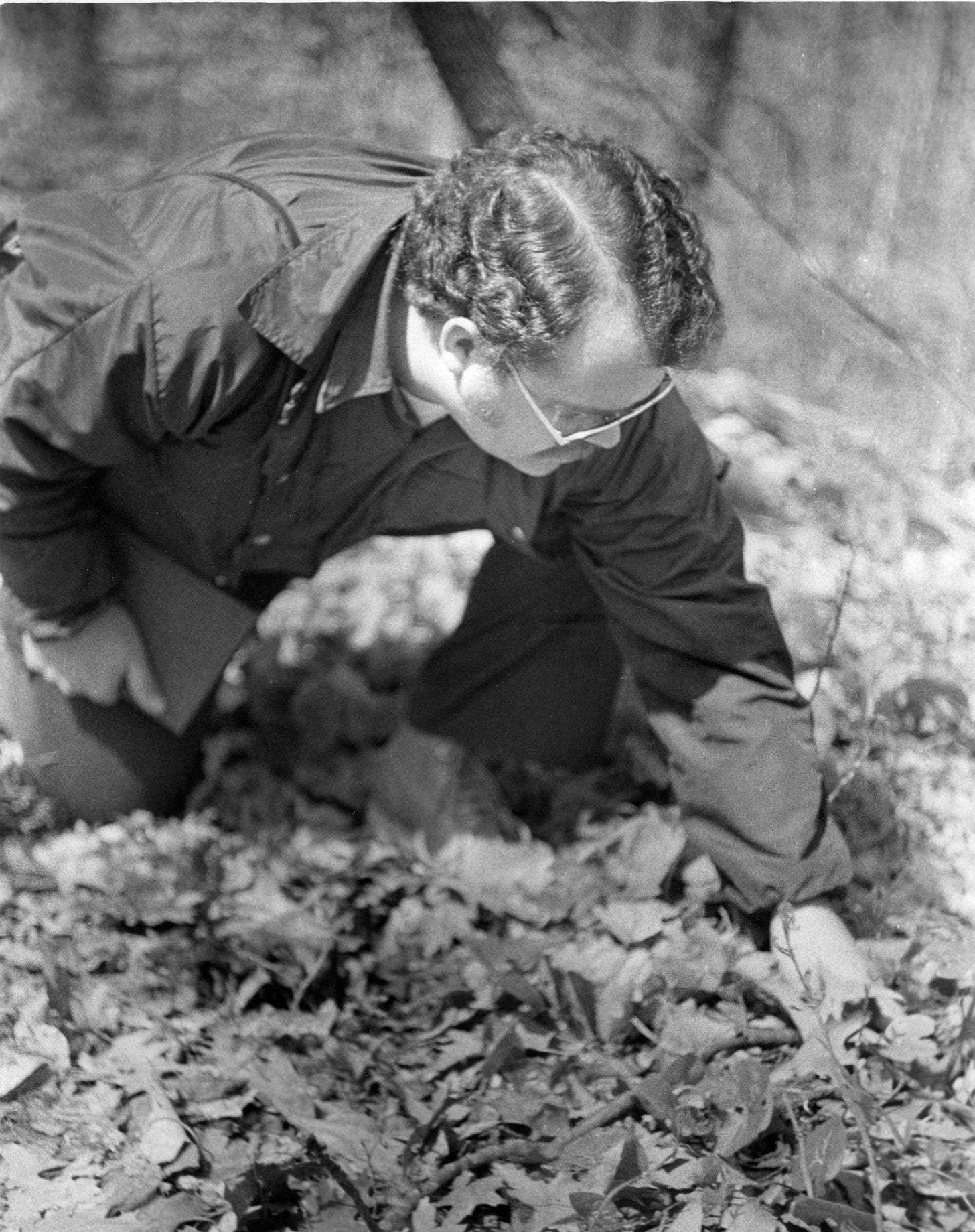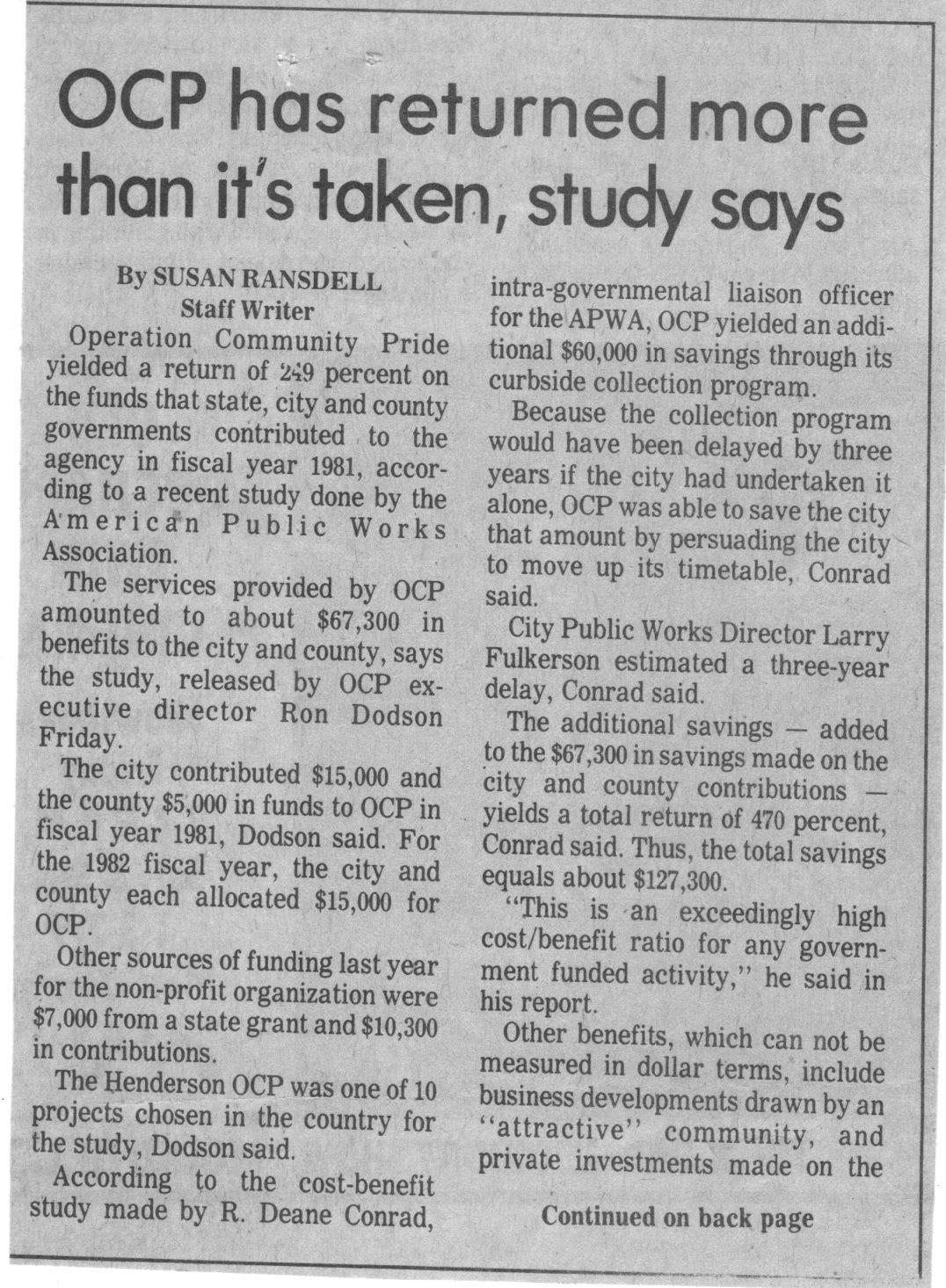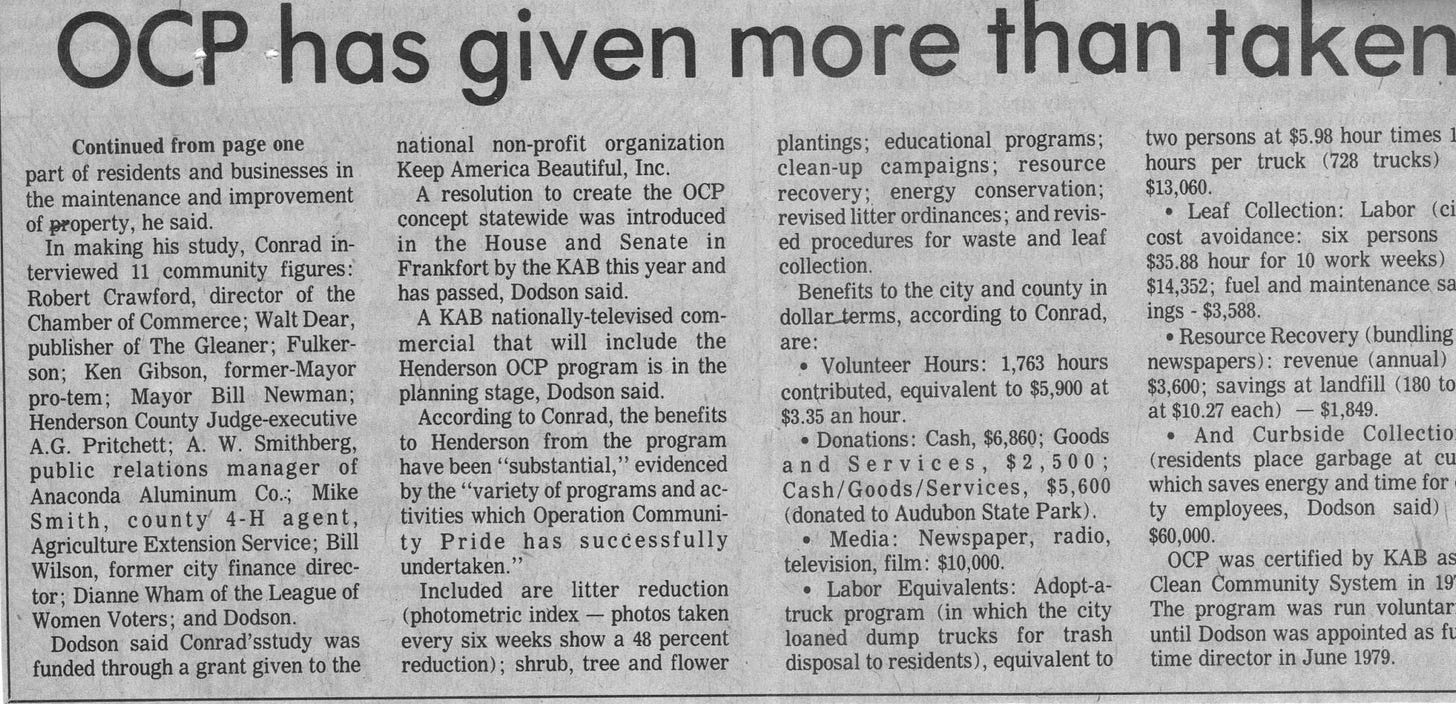Building a Greener Community: How Litter Reduction and Local History Sparked Environmental Action
The Story of Operation Community Pride and How It Demonstrated the Power of Grassroots Stewardship
In the late 1970s, long before the internet, social media, or even cell phones existed, launching a community-wide environmental education initiative required a very different approach than it would today. I understood that if I wanted to engage the community in environmental stewardship, I had to start with topics that were not threatening or controversial. That is why I chose to focus on litter reduction, community beautification, and the history of John James Audubon as the initial stepping stones toward fostering broader environmental awareness and action.
At the time, many people in Henderson, Kentucky, were not actively engaged in environmental issues, but they could see and understand the impact of litter on their streets and neighborhoods. By addressing litter reduction and beautification, I was able to introduce environmental stewardship in a way that resonated with the community’s everyday concerns. Small, visible improvements in the local environment helped foster a sense of ownership and pride, which in turn encouraged further involvement.
Similarly, the history of John James Audubon provided a familiar and compelling narrative that helped connect people to nature. Audubon had lived in the area, and his legacy as an artist and naturalist was something that local citizens could take pride in. By incorporating Audubon’s story into our environmental initiatives, I was able to establish a historical and cultural link to conservation, making it more relatable and meaningful for the people of Henderson.
Because we did not have digital communication tools at the time, spreading this message required a great deal of face-to-face interaction. I spent countless hours meeting with community groups, local leaders, and business owners, introducing various projects and slowly building a network of support. These personal connections were essential in gaining trust and expanding the reach of our initiatives. Along the way, I formed many lasting friendships and found strong allies who helped push the movement forward.
One of the most influential supporters of these efforts was The Henderson Gleaner, the local newspaper. Recognizing the importance of the work being done, the paper’s management approached me with an opportunity to write a weekly column about the environmental efforts taking place in Henderson. In a time before social media, this was one of the best ways to reach a broad audience and keep the community informed and engaged. I gladly accepted the offer and over the years wrote two different columns—Life Outdoors and Your Living Environment. These columns became a platform for discussing conservation issues, highlighting community successes, and encouraging readers to take part in local environmental initiatives.
Of course, as the movement grew, so did the range of opinions about my work. While many community members supported our efforts, others were less enthusiastic. Toward the end of my time in Henderson, opposition began to emerge, and some individuals actively worked to push me out of the community. That chapter of the story, however, is one that I will delve into in a future article.
It was also critical along the way to demonstrate that the Community Pride project (or any project aimed at engaging community support for an issue) was not only delivering on its intended mission but also providing tangible economic benefits to the community. In that regard, Operation Community Pride was selected as one of ten community projects in the United States for a study on effectiveness conducted by the American Public Works Association. The study confirmed that OCP not only met our litter reduction goals but also yielded a return on investment of 249 percent. This finding reinforced the idea that environmental stewardship and economic benefit are not mutually exclusive; rather, they can go hand in hand when structured effectively.
For now, what remains clear is that focusing on common, everyday issues like litter reduction and beautification was an effective way to introduce environmental stewardship to a broader audience. By making these efforts accessible and relevant to people’s lives, we were able to build momentum for more ambitious conservation projects and long-term community engagement in environmental education and action.






